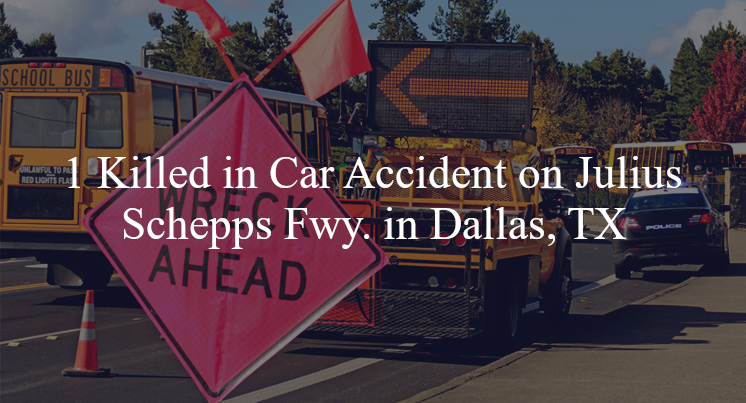1 Killed in Car Accident on Julius Schepps Fwy. in Dallas, TX
Dallas, TX — April 15, 2025, One person was killed following a car accident that occurred Tuesday evening on Julius Schepps Freeway.

An investigation is underway following a car accident that left one person dead during the evening hours of April 15th. According to official reports, a vehicle was traveling on Julius Schepps Freeway in the southbound lanes, when for unknown reasons the vehicle was involved in a collision with another vehicle, though the details of the crash ar currently unknown.
When first responders arrived on the scene, they saw that one vehicle was resting against a concrete barrier. and found that one person had sustained serious injuries and they were transported to the hospital for treatment where later succumbed to their injuries. At this time there has been no further information released from the accident, including whether anyone else was injured, however this remains an ongoing investigation and more details may be released by authorities in the future.
Commentary by Attorney Michael Grossman
When a collision between two vehicles results in a fatality, especially on a major thoroughfare like the Julius Schepps Freeway, there’s a pressing need to understand not just what happened, but why. With one vehicle reportedly coming to rest against a concrete barrier and a fatality following soon after, the situation calls for more than just a routine review. It demands that we ask three essential questions: Did the authorities conduct a thorough investigation? Has anyone examined whether a vehicle defect contributed to the crash? And has all the electronic data been collected from the vehicles involved?
The first question involves the quality and scope of the official investigation. Multi-vehicle crashes often unfold quickly and leave behind complicated scenes. Investigators should be mapping the scene precisely—documenting the positions of both vehicles, skid marks, debris, and the condition of the roadway. Were any evasive maneuvers attempted? Was one vehicle stationary, merging, or changing lanes? These details matter, especially when one vehicle ends up against a concrete barrier. The answers don’t just come from what’s visible at the scene—they come from a reconstruction that looks at speed, timing, and spacing to understand each driver’s actions.
Next, we must consider whether a vehicle defect played any role in the crash or its severity. A malfunction in one vehicle’s steering, braking, or stability systems could lead to a sudden and uncontrollable movement into another lane or into a barrier. On the other side, a defect in the victim’s vehicle—such as seatbelt failure, airbag malfunction, or structural weakness—could mean the difference between a survivable crash and a fatal one. These are not far-fetched scenarios; they’re exactly the kinds of factors that are often missed unless someone specifically looks for them. Without a focused investigation into potential defects, these answers can disappear.
Finally, we must ask whether electronic data from the vehicles has been collected. Most modern vehicles are equipped with electronic control modules (ECMs) that store vital pre-crash data—speed, brake application, steering input, and throttle position. This data can help investigators confirm whether drivers attempted to avoid the crash and whether the vehicles responded as expected. In addition, nearby surveillance footage, dash cameras, or data from mobile devices could offer further context. But all of this digital evidence is time-sensitive. If it’s not secured early, it may be permanently lost or overwritten.
Crashes like this leave lasting impacts on families and communities, and assumptions simply aren’t enough. It takes a detailed investigation, a deliberate examination of vehicle performance, and timely collection of all available data to truly understand what went wrong. That’s how we honor those who’ve been lost—not just by acknowledging the outcome, but by committing to uncovering the full story behind it.

*We appreciate your feedback and welcome anyone to comment on our blog entries, however all visitor blog comments must be approved by the site moderator prior to showing live on the site. By submitting a blog comment you acknowledge that your post may appear live on the site for any visitors to see, pending moderator approval. The operators of this site are not responsible for the accuracy or content of the comments made by site visitors. By submitting a comment, blog post, or email to this site you acknowledge that you may receive a response with regard to your questions or concerns. If you contact Grossman Law Offices using this online form, your message will not create an attorney-client relationship and will not necessarily be treated as privileged or confidential! You should not send sensitive or confidential information via the Internet. Since the Internet is not necessarily a secure environment, it is not possible to ensure that your message sent via the Internet might be kept secure and confidential. When you fill out a contact or comment form, send us an email directly, initiate a chat session or call us, you acknowledge we may use your contact information to communicate with you in the future for marketing purposes, but such marketing will always be done in an ethical way.